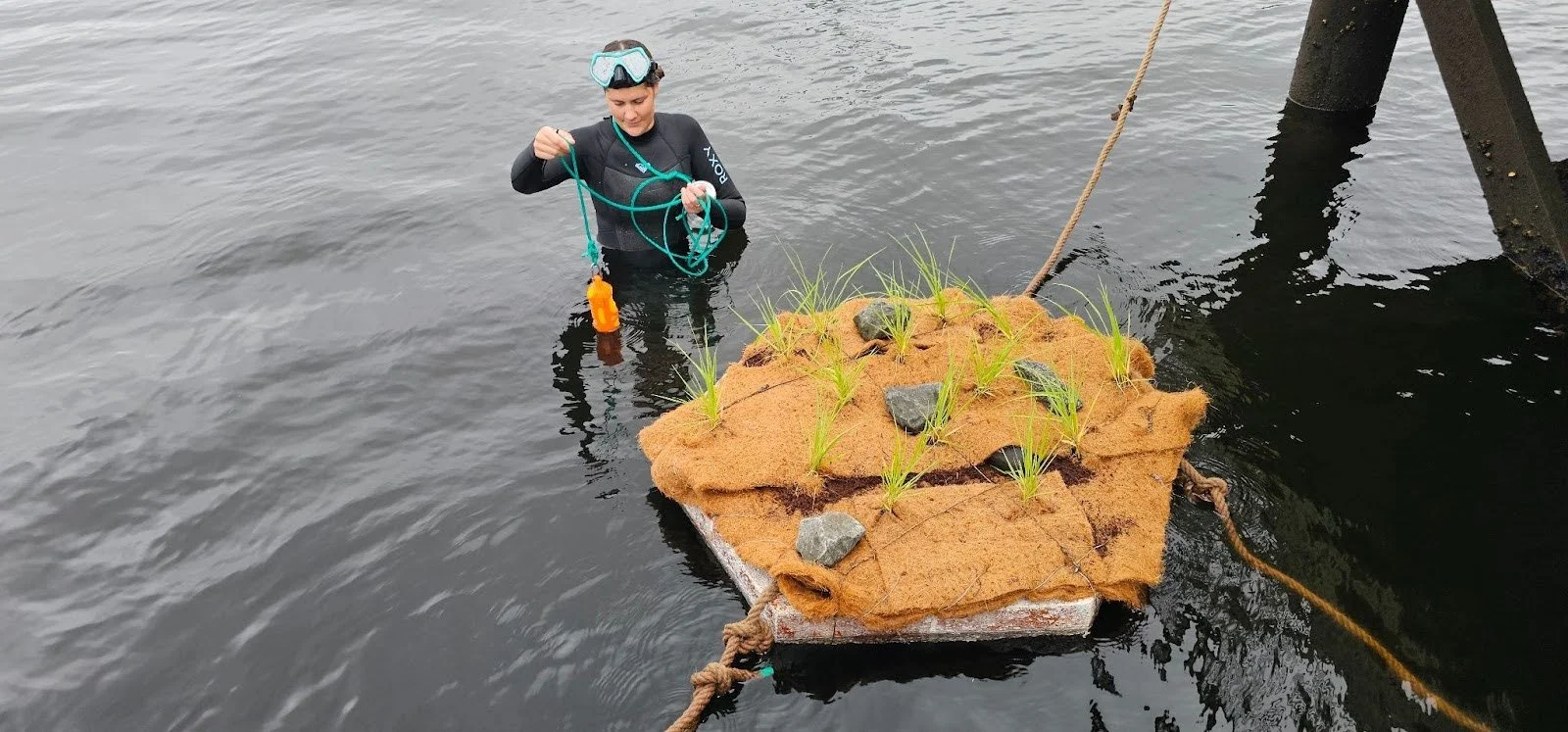SCIENCE TO SOLUTIONS
Science has always been the cornerstone of 5 Gyres’ work, informing our solutions, strategies, and focus. We conduct primary research to better understand the global impact of plastic pollution and to vet alternatives to petroleum-based plastics. Our research projects are collaborative, inviting other global scientists, thought leaders, and industry experts to partner with us, ensuring that we are asking and answering the right questions.
THE SECTOR FRAMEWORK
Our 10+ years of research on ocean and terrestrial plastics leads us to focus on understanding specific sources, or sectors, that generate plastic pollution, in order to create more effective solutions. There are many unique sources of plastic pollution — such as microfibers from textiles, microplastics from agricultural practices, floating ocean plastics from fishing gear, and everyday single-use packaging — and solutions for each of these require specific designs, policy approaches, and innovation. 5 Gyres is focusing much of our current research on microfibers & textiles.
Current Science Projects
Our published research is the result of months, and sometimes years, of behind-the-scenes work for each study. Here is a preview of some current scientific projects and research that will be published in the future. Be the first to know about new scientific developments by subscribing to our newsletter!
PLASTIC AIR
Quantifying sources of microfiber pollution & vetting solutions
We know that laundering our clothing contaminates the air we breathe with plastic microfibers, but we know very little about the scale of this contamination. We’re studying microfiber emissions from commercial laundry facilities in San Francisco to better understand microfiber sources and identify solutions.
PLASTIC CARPETS
Investigating a lesser-known source of microfiber pollution
While microplastic pollution from clothing has garnered increasing attention, other textiles, such as carpets and other upholstery, remain a largely overlooked source of synthetic fiber emissions to both air and water. This study explores the magnitude, characteristics, and pathways of microfiber release from various carpet types in indoor environments.
BETTER ALTERNATIVES
Vetting alternative materials to conventional plastics
Building on 5 Gyres’ Better Alternatives series, this project will test market ready, off-the-shelf products from different sectors, including single-use products and packaging, fishing gear, personal care products, agricultural products, and smoking materials, to investigate fragmentation and biodegradation.
FLOATING WETLANDS
Exploring nature-based solutions for microplastic capture
Coastal areas and nearshore tidal zones represent critical spaces where urban pollution, including microplastics and other contaminants, enters marine ecosystems. Floating wetlands have emerged as a promising, low-tech, nature-based solution to improve water quality and support biodiversity. This field study will provide data on a nature-based filtration solution for microplastics and heavy metals.
Published Research
-
PLOS ONE: A growing plastic smog, now estimated to be over 170 trillion plastic particles afloat in the world’s oceans—Urgent solutions required (March 2023)
Marine Pollution Bulletin: Double trouble in the South Pacific subtropical gyre: Increased plastic ingestion by fish in the oceanic accumulation zone (October 2018)
ScienceDirect: Microplastic sampling with the AVANI trawl compared to two neuston trawls in the Bay of Bengal and South Pacific (September 2017)
The Handbook of Environmental Chemistry: Nature of Plastic Marine Pollution in the Subtropical Gyres (February 2017)
IOPscience: A global inventory of small floating plastic debris (November 2015)
PLOS ONE: Plastic pollution in the world’s oceans: More than 5 trillion plastic pieces weighing over 250,000 tons afloat at sea (December 2014)
Marine Biology: Relationship of diversity and habitat area in North Pacific plastic-associated rafting communities (April 2014)
Marine Pollution Bulletin: The plastic-associated microorganisms of the North Pacific Gyre (October 2013)
Marine Pollution Bulletin: Plastic pollution in the South Pacific subtropical gyre (March 2013)
-
Nature: Global assessment of marine plastic exposure risk for oceanic birds (July 2023)
Journal of Arid Environments: The plight of camels eating plastic waste (November 2020)
Aquatic Conservation: Factors determining the removal of marine plastic debris by seabirds from the South Pacific Ocean: Is there a pattern? (October 2020)
Endangered Species Research: Global research priorities to mitigate plastic pollution impacts on marine wildlife (October 2014)
Science of the Total Environment: Polybrominated diphenyl ethers (PBDEs) in fish tissue may be an indicator of plastic contamination in marine habitats (April 2014)
-
Marine Pollution Bulletin:Time-series of shoreline marine debris highlights impact of urbanization on coastal pollution pathways, Nha Trang, Vietnam (May 2025)
One Earth: Plastics pollution exacerbates the impacts of all planetary boundaries (November 2024)
Science: Predicted growth in plastic waste exceeds efforts to mitigate plastic pollution (September 2020)
SFEI: Understanding Microplastic Levels, Pathways, and Transport in the San Francisco Bay Region (October 2019)
CIEL: Plastic & Climate Change: The Hidden Costs of a Plastic Planet (May 2019)
Marine Pollution Bulletin: Spatial trends and drivers of marine debris accumulation on shorelines in South Eleuthera, The Bahamas using citizen science (March 2019)
Marine Pollution Bulletin: Microplastic contamination in the San Francisco Bay, California, USA (July 2016)
Journal of Great Lakes Research: Pelagic plastic pollution within the surface waters of Lake Michigan, USA (June 2016)
Marine Pollution Bulletin: High-levels of microplastic pollution in a large, remote mountain lake (August 2014)
Tulane Environmental Law Journal: The Plastisphere – The Making of a Plasticized World (April 2014)
Marine Pollution Bulletin: Microplastic pollution in the surface waters of the Laurentian Great Lakes (December 2013)
Reproductive Toxicology: An ecological assessment of bisphenol-A: Evidence from comparative biology (August-September 2007)
-
Environmental Toxicology and Chemistry: Exposure to Cotton and Polyester Microfibers Leads to Different Fatty Acid Profiles and Chemical Contaminants Concentrations in Juvenile Rainbow Trout (April 2025)
Fashion for Good: Behind the Break: Exploring Fibre Fragmentation (March 2025)
Filtration as an effective and near-term solution to reduce the release of microplastics in the environment (April 2023)
Frontiers: Washing Machine Filters Reduce Microfiber Emissions: Evidence From a Community-Scale Pilot in Parry Sound, Ontario (November 2021)
Environmental Toxicology and Chemistry: Are We Underestimating Anthropogenic Microfiber Pollution? A Critical Review of Occurrence, Methods, and Reporting (July 2021)
5 Gyres Institute: Microfibers, Macro Problems (November 2017)
-
Science Advances: Global producer responsibility for plastic pollution (April 2024)
5 Gyres Institute: Better Alternatives 3.0 (November 2023)
One Earth: Moving from symptom management to upstream plastics prevention: The fallacy of plastic cleanup technology (November 2023)
Environmental Science & Technology: Cleaning Up without Messing Up: Maximizing the Benefits of Plastic Clean-Up Technologies through New Regulatory Approaches (August 2023)
Frontiers: Assessing benefits and risks of incorporating plastic waste in construction materials (July 2023)
Marine Pollution Bulletin: Monitor compartments, mitigate sectors: A framework to deconstruct the complexity of plastic pollution (June 2023)
Environment International: Mitigation strategies to reverse the rising trend of plastics in Polar Regions (June 2020)
Break Free From Plastic: The Brand Audit Report 2019 (October 2019)
Plastic Pollution Emissions Working Group: Evaluating the Impact of Mitigation Strategies for Marine Litter and Microplastics to Inform Policy: A White Paper (November 2018)
5 Gyres Institute: Plastics BAN List 2.0 (November 2017)
The Handbook of Environmental Chemistry: Microplastic: What Are the Solutions? (November 2017)
5 Gyres Institute: Testing Trash “Flux” Monitoring Methods in Flowing Water Bodies (December 2016)
5 Gyres Institute: Plastics BAN List (November 2016)
Tulane Environmental Law Journal: The Case for a Ban on Microplastics in Personal Care Products (April 2014)
CONTRIBUTIONS TO REPORTS, REVIEWS, AND SCIENTIFIC JOURNALS:
If you need access to read any of our published papers, please send us an email and include the title of the paper you’re interested in.








